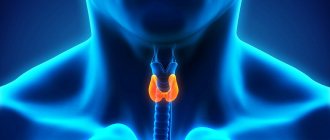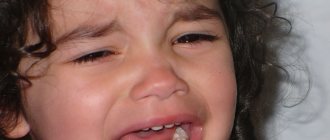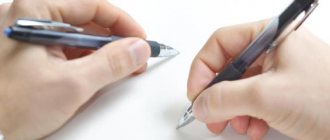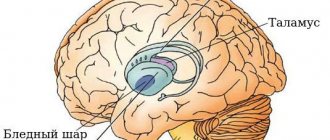Principles of interaction between a patient and a speech therapist
The methods of speech therapy correction for rhinolalia are similar regardless of what form of the disease we are talking about - it can be an open form, a closed form, or in some cases doctors talk about a mixed form.
At the same time, the methods for treating voice formation and articulation disorders caused by defects in the structure of the speech apparatus differ significantly from correctional methods for other speech disorders. One of the unique features of the work in this case is the division of methods into two stages - preoperative and postoperative. In general, five stages of speech therapy work for rhinolalia can be distinguished. All these stages are important, and you cannot skip any of them. The exception is the first year of a child’s life, in which case there is no need to interact with a speech therapist before surgery.
- Compilation of characteristics of a small patient. To do this, the specialist uses the child’s medical record, conducts a conversation with mom and dad, and studies the medical history.
- Speech therapy examination for rhinolalia with the preparation of a speech map. Similar examinations are carried out for all types of speech pathologies. The characteristics of the articulatory apparatus, the state of the voice, the characteristics of breathing, speech, and the nuances of pronunciation of sounds are studied.
- Preparation of the conclusion. In the prepared conclusion, the speech therapist includes all the data that he received during a speech therapy examination of a child with rhinolalia. Next, he draws up a correction plan and makes recommendations. The speech therapist passes the prepared document to other specialists (defectologists, teachers), who contribute to the correction of the pathology.
- Preoperative work of a speech therapist with a patient.
- Postoperative correction of speech problems.
Here we are talking about a fairly widespread disease that requires an integrated approach and does not tolerate indifference. Only with the joint interaction of the child himself, his parents and many specialists can one count on a quick and effective result.
Diagnosis of rhinolalia
The examination of children and adults with rhinolalia is multifaceted and is carried out by various specialists:
- otolaryngologist;
- speech pathologist;
- speech therapist;
- neurologist;
- orthodontist;
- phoniatrist;
- pediatrician
An examination by specialized specialists allows us to identify the etiology of the disease, characterize as accurately as possible the nature of pathological changes and the severity of all symptoms. The following instrumental diagnostic methods are important:
- X-ray of the nasopharynx;
- rhinoscopy;
- electromyography;
- pharyngoscopy, etc.
These techniques make it possible to visualize the nature of pathological changes and their severity in each individual patient.
Of course, the most significant is an examination by a speech therapist, who, using a number of progressive techniques, will be able to assess the following parameters:
- structure of the articulatory apparatus;
- his mobility;
- voice disorders;
- parameters of physiological and phonation breathing, etc.
To diagnose open rhinolalia, the Gutzmann technique is used, which is based on the fact that the patient pronounces the sounds “a” and “i” alternately, while the doctor opens and closes the nasal passages. In the presence of pathological changes, the vibration of the wings of the nose is very clearly felt, and when the nasal passages are pinched, the sounds are significantly muffled. Thus, it is possible to diagnose the open form of rhinolalia.
Before and after surgery: what is important to know
Speech therapy methods for rhinolalia, which are carried out before surgery, are aimed at preparing the speech apparatus for new conditions. This stage should not be ignored, as it significantly facilitates postoperative correction:
- treatment begins with teaching the patient the basics of physiological breathing;
- articulation bases are installed;
- the patient is taught sound pronunciation from scratch, and it does not matter which sounds the child pronounces incorrectly;
- the natural development of speech determines the order of sound production during correction;
- special articulation gymnastics will allow you to establish and develop muscle interaction;
- Correct articulation and phonemic hearing are built and consolidated.
Preoperative correctional work by a speech therapist for rhinolalia should be carried out by a doctor in the office, while the parents wait outside. Family members can be involved in the processes no earlier than a month and a half after the first lesson, and the role of adults increases over time, since it is important to regularly carry out gymnastics, massage, and follow other recommendations of the speech therapist.
Correction after surgery is aimed at sound analysis, at developing the little patient’s ability to analyze and synthesize sounds. The specialist adjusts the production of sounds (the same as in the case of preoperative preparation). In this case, materials and correction methods are selected depending on the patient’s condition and the skills that he has mastered to date. The main difference between speech therapy work for open rhinolalia is the simultaneous study of phonemes from different groups, but only when their articulation differs. If we are talking about phonemes from the same group, it is necessary to observe large time intervals between their study. Speech therapy massage for rhinolalia helps enhance the effect.
Symptoms of rhinolalia
With open organic rhinolalia, the cause of which is various congenital anomalies, the baby’s vital functions such as breathing and nutrition suffer from the very first hours of his life.
As a rule, the sucking reflex in such children is preserved, but feeding becomes difficult, since the child does not latch on to the breast, and when bottle-fed, the mixture flows out through the nose, as a result of which the newborn does not receive the nutrients it needs and is significantly delayed in development. Since nasal breathing is impaired, such children often suffer from chronic inflammatory diseases of the respiratory system, which causes the development of rhinolalia. Among other things, congenital cleft palates are accompanied by various malocclusions, which only contributes to speech problems. This is often due to the fact that in such children the preservation of intelligence varies from normal to very significant developmental delays.
Speech development—both in the prelinguistic period and during the period of speech development—proceeds abnormally. There is no characteristic babbling. Or it is very quiet, barely noticeable. The child begins to pronounce his first words at the age of more than 2 years; his speech is illegible and slurred, and is difficult for others to understand.
With open organic rhinolalia, all sounds have a pronounced nasal connotation, and the child has impaired articulation and pronunciation of sounds. All consonants are more reminiscent of the sound “x”, they cannot be distinguished from each other. The voice is quiet and dull. Trying to pronounce sounds correctly, the child uses the facial apparatus or strains the muscles of the lips, wings of the nose or tongue, which only aggravates the situation.
Problems with speech also affect auditory perception and the ability to phonetically analyze spoken speech. In addition, due to limited communication with peers, these children have a rather poor vocabulary and have problems with written speech. The combination of such changes can lead to the fact that in a child with open organic rhinolalia, speech therapists are forced to note general speech underdevelopment. At the age when the child begins to realize his defect, changes in the speech apparatus are accompanied by various mental disorders and associated layers: isolation, irritability, shyness, etc.
In patients with open functional rhinolalia, the pronunciation of vowel sounds suffers to a greater extent. Such a child pronounces consonants quite well, which is associated with velopharyngeal closure that is quite sufficient for this. With closed functional rhinolalia, as a rule, only the timbre of the voice suffers, which takes on an unnatural, dull, “dead” hue.
Closed organic rhinolalia is characterized by distortion of consonant sounds. The child often changes the sound “m” to the sound “b”, “n” to “d”, etc. With this form of pathology, nasal breathing is difficult, and therefore the child constantly breathes through the mouth, which leads to the fact that such children are susceptible to various inflammatory diseases of the upper respiratory tract, and also often suffer from chronic forms of bronchitis and pneumonia, which have a recurrent course.
NeuroSpectrum is ready to help
The NeuroSpectrum Center for Pediatric Speech Neurology and Rehabilitation employs experienced speech therapists, speech pathologists and other doctors who will help you quickly identify the problem and determine the safest and most effective way to eliminate it. Our specialists have modern diagnostic and medical equipment at their disposal; they constantly improve their qualifications, improve their skills and abilities, so that they are able to cope with the most complex and advanced cases.
The specialists of our Center use different areas of speech therapy work for rhinolalia - a complex effect allows you to get the desired result much faster. Hundreds of our patients have gotten rid of problems with sound pronunciation and speech and today speak clearly, quickly, and confidently.
Corrective work for rhinolalia
How to distinguish paresis (paralysis) of the soft palate from functional nasality?
It is important to distinguish paresis (paralysis) of the soft palate from functional (habitual) nasality. You can do this in the following ways:
— The child opens his mouth wide. The speech therapist (parent) presses with a spatula (the handle of a spoon) on the root of the tongue. If the soft palate reflexively rises to the back wall of the pharynx, we can talk about functional nasality, but if the palate remains motionless, there is no doubt that the nasality is of organic origin (paresis or paralysis of the soft palate).
— The child lies on his back and says some phrase in this position. If the nasal sound disappears, then we can assume paresis (paralysis) of the soft palate (the nasal sound disappears due to the fact that when lying on the back, the soft palate passively falls to the back wall of the pharynx).
Eliminating nasal tone of voice with massage and exercises
To eliminate the nasal tone of the voice, both the child, the speech therapist, and, of course, loving parents will have to work hard.
First of all, you will need to activate the soft palate and make it move. For this you will need a special massage . If the child is too small, adults do the massage:
1) with a clean, alcohol-treated index finger (pad) of the right hand, in the transverse direction, stroking and rubbing the mucous membrane at the border of the hard and soft palate (in this case, a reflex contraction of the muscles of the pharynx and soft palate occurs);
2) the same movements are made when the child pronounces the sound “a”;
3) make zigzag movements along the border of the hard and soft palate from left to right and in the opposite direction (several times);
4) with your index finger, perform acupressure and jerk-like massage of the soft palate near the border with the hard palate.
If the child is already big enough, then he can do all these massage techniques himself: the tip of the tongue will cope with this task perfectly. It is important to correctly show how all this is done. Therefore, you will need a mirror and the interested participation of an adult. First, the child performs massage with the tongue with his mouth wide open, and then, when there are no more problems with self-massage, he will be able to perform it with his mouth closed, and completely unnoticed by others. This is very important, because the more often the massage is performed, the sooner the result will appear.
When performing a massage, you must remember that you can cause a gag reflex in a child, so do not massage immediately after eating: there should be at least an hour break between meals and massage. Be extremely careful and avoid rough touches. Do not massage if you have long nails: they can damage the delicate mucous membrane of the palate.
In addition to massage, the soft palate will also need special gymnastics. Here are some exercises:
1) the child is given a glass of warm boiled water and asked to drink it in small sips;
2) the child gargles with warm boiled water in small portions;
3) exaggerated coughing with the mouth wide open: at least 2-3 coughs on one exhalation;
4) yawning and imitation of yawning with the mouth wide open;
5) pronouncing vowel sounds: “a”, “u”, “o”, “e”, “i”, “s” energetically and somewhat exaggerated, on the so-called “hard attack”.
Restoring breathing
First of all, it is necessary to eliminate the causes: carry out appropriate operations, get rid of adenoids, polyps, fibroids, deviated nasal septum, inflammatory swelling of the nasal mucosa with a runny nose and allergic rhinitis, and only then restore proper physiological and speech breathing.
It can be difficult, and sometimes even uninteresting, for a small child to perform exercises just for demonstration. Therefore, use gaming techniques, come up with fairy-tale stories, for example these:
“Ventilating the cave”
The tongue lives in a cave. Like any room, it must be ventilated often, because the air to breathe must be clean! There are several ways to ventilate:
- inhale air through your nose and exhale slowly through your wide open mouth (and so on at least 5 times);
- inhale through the mouth and exhale slowly through an open mouth (at least 5 times);
- inhale and exhale through the nose (at least 5 times);
- inhale through your nose, exhale through your mouth (at least 5 times).
"Snowstorm"
An adult ties pieces of cotton wool onto strings and fastens the free ends of the threads onto his fingers, thus making five strings with cotton balls at the ends. The hand is held at the level of the child’s face at a distance of 20–30 centimeters. The baby blows on the balls, they spin and deviate. The more these impromptu snowflakes spin, the better.
"Wind"
This is done in the same way as the previous exercise, but instead of threads with cotton wool, a sheet of paper is used, cut with a fringe at the bottom (remember, such paper was once attached to the windows to repel flies?). The child blows on the fringe, it deviates. The more horizontal the strips of paper take, the better.
"Ball"
Tongue's favorite toy is a ball. It's so big and round! He's so much fun to play with! (The child “puffs up” his cheeks as much as possible. Make sure that both cheeks puff out evenly!)
“The ball deflated!”
After prolonged games, the tongue's ball loses its roundness: air comes out of it. (The child first strongly inflates his cheeks, and then slowly exhales air through his rounded and elongated lips.)
"Pump"
The ball has to be inflated using a pump. (The child’s hands perform the appropriate movements. At the same time, he himself pronounces the sound “s-s-s-..." often and abruptly: the lips are stretched in a smile, the teeth are almost clenched, and the tip of the tongue rests against the base of the lower front teeth. The air comes out of the mouth strongly pushes).
"The tongue plays football."
Tongue loves to play football. He especially likes scoring goals from the penalty spot. (Place two cubes on the side of the table opposite from the child. This is an improvised goal. Place a piece of cotton wool on the table in front of the child. The baby “scores goals” by blowing from a wide tongue inserted between his lips onto a cotton swab, trying to “bring” it to the goal and get into them. Make sure that your cheeks do not swell and the air flows in a trickle down the middle of your tongue.)
When performing this exercise, you need to make sure that the child does not accidentally inhale the cotton wool and choke.
"The tongue plays the pipe"
Tongue also knows how to play the pipe. The melody is almost inaudible, but a strong stream of air is felt, which escapes from the hole of the pipe. (The child rolls a tube from his tongue and blows into it. The child checks the presence of a stream of air on his palm).
"Block and Key"
Does your child know the fairy tale “Three Fat Men”? If so, then he probably remembers how the girl gymnast Suok played a wonderful melody on the key. The child tries to repeat this. (An adult shows how to whistle into a hollow key).
If you don’t have a key at hand, you can use a clean, empty bottle (pharmacy or perfume) with a narrow neck. When working with glass vials, you must be extremely careful: the edges of the bubble should not be chipped or sharp. And one more thing: watch carefully so that the child does not accidentally break the bottle and get hurt.
As breathing exercises, you can also use playing children's musical wind instruments: pipe, harmonica, bugle, trumpet. And also inflating balloons, rubber toys, balls.
All of the above breathing exercises should only be performed in the presence of adults! Remember that when doing exercises, your child may become dizzy, so carefully monitor his condition, and stop the activity at the slightest sign of fatigue.
Articulation exercises for rhinolalia
For open and closed rhinolalia, it can be very useful to perform articulation exercises for the tongue, lips and cheeks. You can find some of these exercises on the pages of our website in the sections “Classical articulation gymnastics”, “Fairy tales from the life of Tongue”.
Here are a few more. They are designed to activate the tip of the tongue:
1) “Liana”: hang a long narrow tongue down to the chin, hold in this position for at least 5 seconds (repeat the exercise several times).
2) “Boa constrictor”: slowly stick out your long and narrow tongue from your mouth (do the exercise several times).
3) “Boa constrictor tongue”: with a long and narrow tongue, sticking out as much as possible from the mouth, make several quick oscillatory movements from side to side (from one corner of the mouth to the other).
4) “Clock”: the mouth is wide open, the narrow tongue makes circular movements, like the hand of a clock, touching the lips (first in one direction and then in the other direction).
5) “Pendulum”: the mouth is open, a narrow long tongue is protruding from the mouth, and moves from side to side (from one corner of the mouth to the other) on the count of “one - two”.
6) “Swing”: the mouth is open, the long narrow tongue either rises up to the nose, then falls down to the chin, counting “one or two.”
7) “Prick”: a narrow, long tongue presses from the inside on one or the other cheek.
You can also diversify articulation gymnastics
GASTRONOMIC AND Speech Therapy GAMES
Fun articulation exercises for children that they will have great fun doing because all the exercises are done with sweets!
- Stick out your tongue and hold the straw on it for as long as possible.
- Suck the chewing spaghetti into your mouth through your pursed lips.
- The same long piece of marmalade should be pressed between your lips and pulled with your hand. And you have to try to hold the marmalade with your lips!
- Open your mouth and try to keep the straw balanced on your tongue. You can press it against your upper teeth, but you cannot close your mouth.
- Make a mustache! Hold the straw against your upper lip using the tip of your tongue.
- Now we make a mustache by holding the straw with our lips.
- Now the task is more difficult: you need to hold the straw in a vertical position (almost), holding one end between your lower teeth and tongue.
- Hold the candy ball (or breakfast cereal) in your tongue, like in a cup.
- Lick the lollipop when it is on the side, top, bottom.








